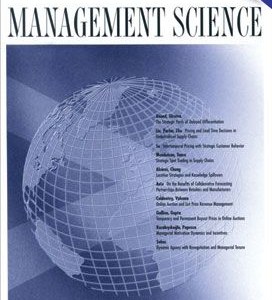
Cattrysse, D., Salomon, M., Kuik, R. and \van Wassenhove\, L.N. (1993). A dual ascent and column generation heuristic for the Discrete Lotsizing and Scheduling Problem with setup times Management Science, 39(4):477--486.
-
Affiliated authorMarc Salomon
-
Publication year1993
-
JournalManagement Science
In this paper the Discrete Lotsizing and Scheduling Problem (DLSP) with setup times is considered. DLSP is the problem of determining the sequence and size of production batches for multiple items on a single machine. The objective is to find a minimal cost production schedule such that dynamic demand is fulfilled without backlogging. DLSP is formulated as a Set Partitioning Problem (SPP). We present a dual ascent and column generation heuristic to solve SPP. The quality of the solutions can be measured, since the heuristic generates lower and upper bounds. Computational results on a personal computer show that the heuristic is rather effective, both in terms of quality of the solutions as well as in terms of required memory and computation time.